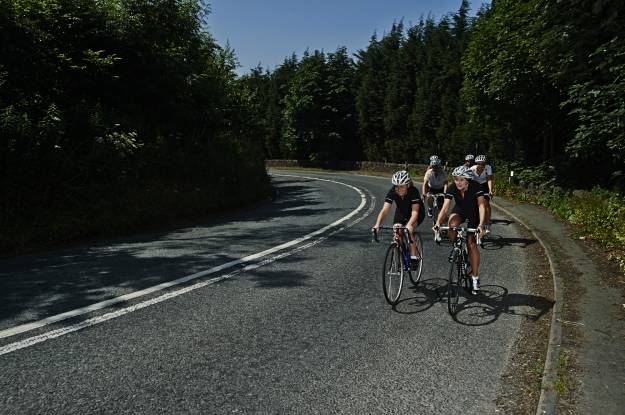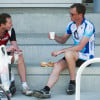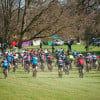Knowledge Level: Intermediate
If you have been following the British Cycling Training Plans, then you should be 100% confident that you have got the fitness and riding skills to tackle your target cycling events. Equally important though is how you approach the crucial final couple of weeks and the logistical preparations before your target event. Make a mistake with these and those months of hard training can easily go to waste.
Two weeks before
In the weeks leading up to your event, you will have less training volume to complete. You should have planned your training to accommodate a taper week followed by an event week. If you have been following one of our training plans this would have been scheduled in. Devote this extra time you have from the drop in training volume to making a list of things you need for the event and what you need to buy such as inner tubes or more gels/bars. It is also worth inspecting your equipment and replacing any that looks worn from all your training. Make sure you give any new kit a test run though and don’t save it until the big day. This especially applies to cycling clothing such as shorts and jerseys which should always be tested and washed before first use as they could have seams that rub or the material could be itchy.
Book your bike in for a service or give it an overhaul yourself. Try to get your bike booked in the workshop for a rest day, as you won’t miss out on any training. Allowing two weeks will give plenty of time for any new parts to be ordered and will let any new cables or components bed in.
If you are travelling to your event by car and staying in a hotel, make sure that your hotel will let you keep your bike in the room or has a secure lock up for bikes. Knowing your bike is vulnerable in the back of your car won’t make for a good night’s sleep and, if it should get stolen, you definitely won’t have a good ride.
Check the event website and make sure that your familiar with the route and where any major climbs and feed stations are located. If a gpx file is available for the route, download it onto your GPS device and check that it is working correctly.
Week before
The temptation is always to try to fit in one more hard training session but this will only do more harm than good. It won’t make you any fitter and will reduce the effectiveness of your taper. Training adaptions takes place over weeks and after a period of recovery, so, take the rest that is planned in the British Cycling Training Plans and you will be on top form on event day.
Don’t start tinkering with your bike or kit. You will have refined your set-up during training and made sure that your bike is running optimally during the preceding week.
It is also not a time to change anything with your diet, as any dramatic changes could lead to digestive distress on the day of your event. Through your training, you will have found your ideal fuelling strategy based on these guidelines and you should stick to this structure as your body will be used to it.
Start to look at long term weather forecasts. Try a few websites and try to get an idea of what the weather will be like on event day. Once you know what the weather is likely to be, make sure you have the appropriate clothes ready. Don’t forget though that forecasts are often wrong and, especially if your ride involves mountainous terrain, that conditions can rapidly change. It is always better to have packed too many clothes and not to use them than to not have enough. Print off all race information and check if you should have received anything in the post prior to the event.
Days before
Arrange all your clothing, kit and food and double check it against a list before packing. Make sure any essential electronic kit such as power meters, GPS units or electronic shifters are thoroughly charged.
Signing in
Many sportives require you to produce photo ID before signing on so, if this is the case, make sure you have it with you. If you know there is a tough climb within the first 5-10 km of the ride, you might want to complete a warm up before you roll off. If the ride starts off fairly flat though, you won’t need to do this and can use the opening kilometres to warm into the ride. Approaching the first 5-10 km of a sportive as a warm-up is often good idea anyway as it will ensure you don’t go off too hard.
Always attend and listen to the event safety briefing as there are often last minute route changes or diversions. Make sure you are aware of any safety points whilst out on your ride and what to do in case of emergencies. Have your phone prepared with the password unlocked, ICE (In case of emergency) in the contact title of family members and event organisers in your phone.
The start and ride
If it is a mass start make sure you get there in plenty of time. If it’s a rolling start, check to see if there are any pacing guidelines for start windows and don’t forget to check in your electronic dibber if they are being used.
Try to find a group that you can ride with as this will save energy. If you are unsure about riding with a group try to get some practice in beforehand. Don’t be surprised though if the group fragments on climbs though but, once back on the flat, new groups will quickly form.
From your training you will have an event plan and you should try to stick to it. Be strict about your pacing and intensity and follow the same nutritional plan as you have in training. Be flexible though and don’t be put off if things don’t go 100% according to plan. You might have to put in a hard effort to rejoin a group following a puncture, the organiser might have under measured the route or they might have run out of flapjacks at a feed station. Keep calm, keep relaxed and adapt to the situation.
The finish
As with your long training rides, your first priorities on finishing will be a recovery drink and some warm clothing. Make sure you have everything laid out in your car or neatly arranged in a bag at the finish as, you’ll probably be very tired and not thinking straight. If they do not have showers or changing area after the sportive, a tea towel with some bottled water, wet wipes or some “dry shower” spray will suffice, giving you a slightly fresher feeling. If there is a suitable space, have a gentle stretch before tackling the drive home and consider slipping into some compression tights. There are a number of steps you can take to optimise your recovery.
Not yet found a sportive event to ride? Visit the British Cycling sportive page to find the sportive for you.













